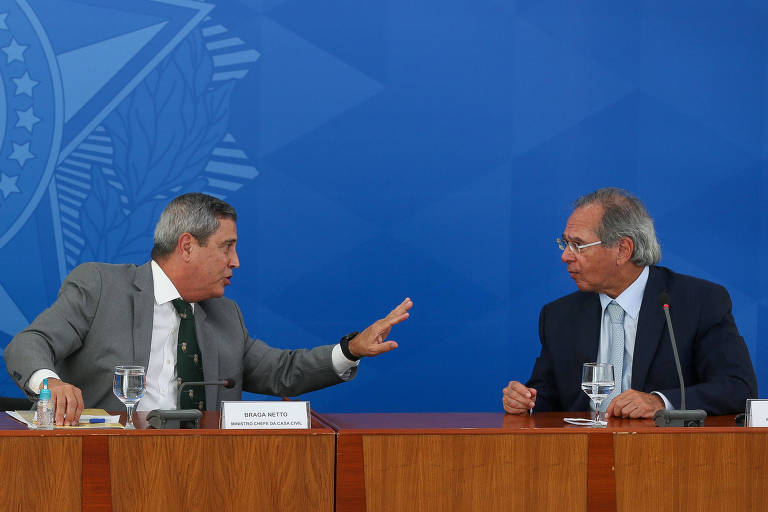Aos 70 anos da criação da OECE, que administrou o Plano Marshall na Europa, este livro constitui uma grande adição (estrito e lato sensos) à bibliografia.
Reviewed by Andrew N. Buchanan (University of Vermont)
Published on H-Diplo (April, 2018)
Commissioned by Seth Offenbach (Bronx Community College, The City University of New York)
The bibliographic details of this book should probably include its size (9.5” by 12”) and its weight (five pounds). This is a physically impressive book, and its sheer size, beautiful design, and lavish illustration suggest a work intended for display on coffee tables rather than use in academic studies. Yet the authors are both senior scholars of Austrian history and of the Marshall Plan in particular. Günter Bischof is the Marshall Plan Professor of History at the University of New Orleans and Hans Petschar is a historian and librarian at the Austrian National Library and the holder of the 2016-17 visiting Marshall Plan Chair at the University of New Orleans. Their credentials suggest that the authors have something more than a coffee table book in mind, and as it weaves its way through the pages of photographs their text offers a serious scholarly appreciation of the working of the Marshall Plan in Austria.
Austria found itself in an ambiguous—not to say dangerous—position at the end of World War II. The occupation of the western part of the country by Allied armies and of the eastern part by the Soviet Red Army ensured that, like Germany, Austria would be subject to a four-way partition and military occupation. The strictures of Austrian geography left both the capital, Vienna, and the country’s traditional industrial heartland in Soviet hands. Austria also shared long borders with Czechoslovakia, Hungary, and Yugoslavia, all of which emerged from the war in the Soviet sphere, into which they were ever more firmly integrated in the late 1940s and early 1950s. Much of Austria’s prewar trade was with these countries, and ties between them remained strong; in the south, Josip Tito’s Yugoslavia laid claim to the southern Austrian province of Carinthia. As Bischof and Petschar show, these considerations forced Austria’s postwar government, formed in November 1945 as a “grand coalition” between the conservative People’s Party and the moderate Social Democratic Party, to walk a fine line. Austrian leaders wanted to avoid provoking Moscow into imposing a German-style partition, but at the same time they clearly recognized the economic and political benefits of pursuing integration into the American-dominated Western European bloc.
Bischof and Petschar discuss the evolution of American postwar aid to Austria in some detail, beginning with the emergency supplies of food delivered by the US Army, by the United Nations Relief and Recovery Administration (UNRRA), and by the privately organized Cooperative for American Remittances to Europe (CARE) that helped to stave off starvation during the desperate winter of 1945-46. After UNRRA operations were wound up, Washington stepped in directly, assuming responsibility for the Austrian trade deficit in January 1947. From there, American aid developed through the well-known steps, marked by Secretary of State George C. Marshall’s speech at Harvard University in June 1947 sketching out the main outlines of what would become the Marshall Plan; by the July 1947 meeting in Paris to discuss that plan, at which the continent clearly split into two hostile blocs; and by congressional approval of the Foreign Assistance Act that set up the European Recovery Program (ERP) the following summer.
As Bischof and Petschar show, Austrian leaders were adept at leveraging the difficult and complex situation in which they found themselves to maneuver between the emerging US and Soviet blocs in ways that maximized inflows of American aid while giving Austrian politicians a great deal of control over how that aid was deployed. In Austria the Marshall Plan produced “strange bedfellows,” with US “capitalist Marshall Planners cozying up to Socialist state planners” to secure American funding for heavy industry and large-scale power generation projects (pp. 128-29). At the same time, the Austrian government nationalized Nazi-funded plants like the steel mill at Linz in order to shield them from Soviet demands for reparations in the form of “German assets” (p. 128). To some extent, American support for these statist projects reflected a globalization of New Dear corporatism, but despite its short-term utility it was an approach that contradicted Washington’s increasingly forceful commitment to free trade and unregulated markets.
Tensions between American policymakers and Austrian politicians mounted as American policy shifted towards a new emphasis on rearmament and increased productivity in the light of the intensification of the Cold War and the outbreak of hot war in the Korean peninsula. American policymakers railed against what they viewed as Austria’s archaic corporatist “chamber state” and its semi-socialist business practices, and they did not shrink from threatening to withdraw aid in order to push through reforms (p. 167). Nevertheless, actual reforms were slow to materialize, and Austria continued to receive a disproportionate share of ERP funding. In 1951-52 American pressure to “stabilize” the Austrian economy finally provoked a severe political crisis that culminated in 1953 in new elections (p. 130). While the postwar Socialist Party/People’s Party coalition continued to govern, Julius Raab’s leadership signified a more market-friendly orientation, and by 1954 an Austrian economic miracle “of sorts” was underway (p. 230). Self-sustaining economic growth, boosted by the dramatic expansion of a tourist industry funded by the ERP, allowed the “American aid drip to end,” and American policymakers proudly “claimed victory” in their nine-year struggle to modernize the Austrian economy (p. 239). The following year, and based on a pledge of permanent neutrality, negotiations for the State Treaty that formally reestablished Austrian sovereignty were finally concluded, and the postwar military occupation ended. Satisfied that Austria would not become a forward bastion of NATO, Moscow supported the treaty. Faced with a deepening split with Yugoslavia, Soviet leaders had already quietly shelved their support for Tito’s claims on Carinthia.
For all its undoubted strengths as a blow-by-blow history of the operation of the Marshall Plan in Austria, however, Bischof and Petschar’s account remains locked in historiographical tropes that are—to say the least—a little dated. Throughout the book, the Marshall Plan/ERP is presented as an act of unalloyed and unambiguous American generosity, an approach summarized in the book’s subtitle (“Saving Europe, Rebuilding Austria”) and in its dedication to the “generous American taxpayers” who “unselfishly”—and no doubt largely unknowingly— funded Austria’s postwar recovery. The authors do acknowledge that “revisionist” historians mounted a “searing critique of American ‘penetration’ of the Austrian economy” that gained a “foothold in Austria” in the 1990s (p. 15). The implication is that it no longer needs to be taken too seriously. Beyond a few cursory references, critical analysis of the construction of America’s postwar hegemony has little salience here. Instead, US involvement Austria’s early postwar history is presented simply as a positive memory that needs to be “cultivated and kept alive” in ways that pay due homage to “American aid and postwar generosity” (p. 15).[1]
If this silence on the complexities and ambiguities of America’s postwar policy is troubling, so too is the absence of any discussion of the complexities and ambiguities of Austria’s own prewar and wartime history. Austrian politics during the decade of the Great Depression were marked first by the establishment of a homegrown rightist—or “Austrofascist”—government in 1934, and then by the widely supported Anschluss, or “joining,” of Austria and Nazi Germany in 1938. From 1938 until the end of the war, the former state of Austria was known as Ostmark and integrated directly into the greater German Reich. As Bischof and Petschar explain, Berlin invested heavily in the industrial development of the western Ostmark—a region considered relatively safe from Allied bombing—and much of this new plant and equipment survived the war (p. 24). Wartime industrialization, later augmented by American investment, shifted the country’s economic center of gravity away from Vienna. As German investment poured in, 1.3 million men from the Ostmark were conscripted into the German military, serving on the same basis as those from elsewhere in the Reich. Nearly 250,000 of them were killed.[2]
The ongoing discussion over the degree to which Ostmark/Austria was willingly integrated into the Nazi Reich has important implications for understanding the development of Washington’s postwar relations with Austria, and hence for the Marshall Plan. Yet, while as John Boyer notes there is now “general skepticism” among scholars regarding the “ambivalent motives of the founders of the Second Republic,” none of this finds expression here.[3] This is an important omission. A degree of shared amnesia with regards to Austria’s immediate past was common to both Austrian and American leaders, and it played a critical role in setting the ideological framework for Austria’s incorporation in the postwar order in Western Europe. Beginning with the declaration of the Allied foreign ministers issued in Moscow in October 1943, the “polite fiction” that Austria was an unwilling “first victim” of Nazi expansionism was a key foundational element of both the new postwar sense of Austrian identity and of the development of American policy towards Austria.[4] In the context of rapidly deepening tensions between the United States and the Soviet Union, Austria’s postwar leaders were able to use the political space created by this shared fiction to secure disproportionately large amounts of US aid and, more importantly, inclusion into the postwar economic order taking shape in Western Europe. This shared fiction thus paved the way for the success of Washington’s effort to, as David Ellwood puts it, “remake” Austria and to secure its “anchorage in the West.”[5] Moscow had no answer to Washington’s economic power or to its pervasive and carefully cultivated cultural influence, and the Soviets’ “depredations” (as Bischof and Petschar unfailingly call them) of the Austrian economy through the seizure of (allegedly) German assets in its occupation zone only reinforced elite allegiance to the West (pp. 52, 58, 101). Of course, not everyone agreed, but in this account communist-led working-class protests are safely marginalized as mere “riots” (pp. 35, 52, 90).
I do not raise this question to prettify Soviet policy, but simply to suggest that the motives of the US policymakers who spent the money coughed up by “generous” American taxpayers and of the Austrian politicians who drew a convenient veil over their country’s recent past, must also be weighed a little more critically. The notion of remaking a foreign country through the twin levers of military occupation and economic aid should necessarily raise some fundamental questions of hegemony, sovereignty, and national self-determination, but none of these complexities register here.
Whatever the limitations of the text, the numerous pages of photographs offer a unique pictorial insight into postwar Austria. They include some arresting images: a picture of families returning to Vienna carrying huge bundles of firewood collected in the surrounding countryside is particularly striking. The illustrations are well integrated into the text, particularly in a compelling section on the work of Yoichi R. Okamoto, head of the United States Information Services (USIS) Pictorial Section in Vienna. In this section Bischof and Petschar reflect upon America’s growing cultural influence in Austria by highlighting Okamoto’s “highly imaginative” work and how it inspired a “cohort” of young Austrian photo artists (p. 201). Okamoto’s photos, supported by colorful graphic depictions of the impact of various ERP projects, helped to sell the Marshall Plan to the Austrian people. Over four hundred photos, many of them reproduced here, documented the Train of Europe’s forty-day tour of Austria. During the tour, over four hundred thousand Austrians visited the exhibitions housed on the train, where they were presented with a vision—as Bischof and Petschar describe it—of “a free Europe in a free world, based on democratic principles and supported and guided by the US economy” (p. 207). That vision is on full and sumptuous display here, and its graphic content alone makes this a book that your library should acquire. It is, however, a vision that the authors do not examine critically.
Notes
[1]. Works including Reinhold Wagnleitner’s Coca-Colonization and the Cold War: The Cultural Mission of the United States in Austria after the Second World War, trans. Diana M. Wolf (Chapel Hill: University of North Carolina Press, 1994); Gene R. Sensenig’s Österreichisch-amerikanishe Gerwerkschafts-beziehungen (Cologne: Pahl-Rugenstein Verlag, 1987); Hannes Hofbauer’s Westwärts: Österreichs Wirtschaft im Wiederaufbau (Vienna: Vlg f Gesellschaftskritik, 1992); and Arno Einwitschläger’s Amerikanische Wirtschaftpolitik in Österreich 1945-1949 (Vienna: Boehlau Verlag, 1998) appear in a footnote and in the bibliography but have no apparent salience in the text.
[2]. Richard Germann, “Austrian Soldiers and Generals in World War II,” Contemporary Austrian Studies 17 (2009): 29.
[3]. John W. Boyer, “Power, Partisanship, and the Grid of Democratic Politics: 1907 as the Pivot Point of Modern Austrian History,” Austrian History Yearbook 44 (2013): 168.
[4]. Tom Buchanan, Europe’s Troubled Peace, 1945-2000 (Malden, MA: Blackwell, 2006), 88.
[5]. David W. Ellwood, The Shock of America: Europe and the Challenge of the Century (New York: Oxford University Press, 2012), 337, 384.
This work is licensed under a
Creative Commons Attribution-Noncommercial-No Derivative Works 3.0 United States License.






